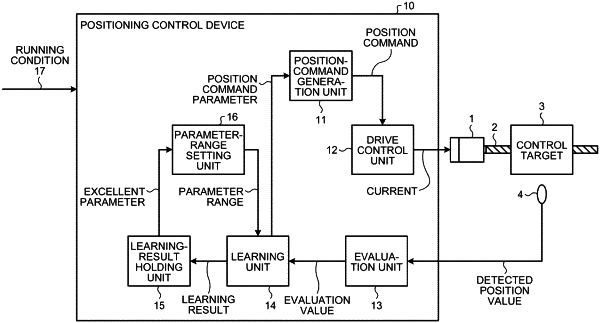| CPC G05B 19/19 (2013.01) [G05B 19/41885 (2013.01); G05B 19/404 (2013.01)] | 26 Claims |

|
1. A positioning control device that moves a control target by a target movement distance by driving a motor, the positioning control device comprising:
a position-command generating circuitry to generate a position command by which a shape of an acceleration in an accelerating section and a shape of an acceleration in a decelerating section are determined on a basis of a position command parameter;
a controlling circuitry to drive the motor such that a detected position value of the motor or the control target follows the position command;
an evaluating circuitry to calculate an evaluation value that is a numerical value for evaluating quality of positioning control on the control target on a basis of a detected position value of the motor or the control target during execution of the positioning control on the control target; and
a learning circuitry to learn a relation between a plurality of parameters included in the position command parameter and the evaluation value when the positioning control is executed plural times, while changing the shape of the acceleration in the accelerating section and the shape of the acceleration in the decelerating section independently, the shapes of the accelerations in the accelerating section and the decelerating section being determined on a basis of the position command parameter, and to obtain, as a learning result, a relational expression indicating a relation between the evaluation value and the position command parameter within a parameter range that specifies an upper limit value and a lower limit value, of each of the parameters defining the position command parameter.
|